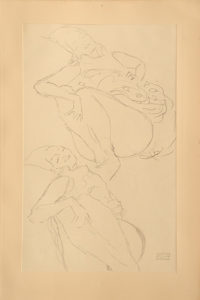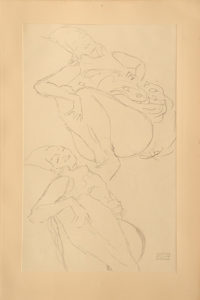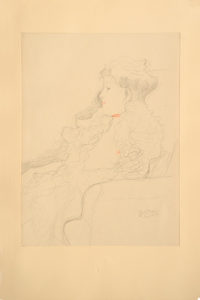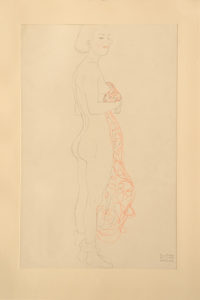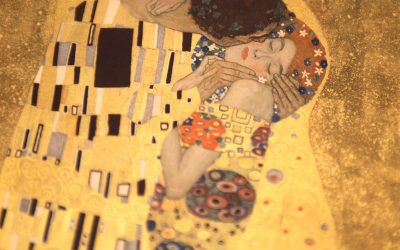In his “Commentary on a Non-Existent Self-Portrait”, Gustav Klimt wrote: “I have never painted a self-portrait. I am less interested in myself as a subject for a painting than I am in other people, above all women…There is nothing special about me. I am a painter who paints day after day from morning to night…Whoever wants to know something about me…ought to look carefully at my pictures.”
Klimt’s works were revealing in more ways than one: his body of work is perhaps best characterised by its frank eroticism. Aside from a few landscapes, it is his depiction of the female nude that won him his biggest fans and his harshest critics. In 1900, he was commissioned to paint the ceiling of the Great Hall at the University of Vienna. His depictions of Philosophy, Medicine and Jurisprudence in female form subverted traditionally allegorical and symbolic images, creating a new, more sexual depiction. The claims that the works were pornographic lead to their removal from the Great Hall, and Klimt decided to no longer accept public commissions.
This did not hinder his career, however. Despite not taking part in the cafe culture which was so important for European artists at the time and living a mostly reclusive life, Klimt’s fame brought the patrons to his door, and with his wild success he was able to afford to be selective. The influence of Japanese art made Klimt’s work distinctive, and as a leading figure of the Vienna Secession movement, he was not bound by the constrictions of a particular ideal in the creation of art or a stylistic movement. As the motto of the Secessionists pledged: “Der Zeit kunst. Der Kunst ihre Freiheit” (To every age its art. To art its freedom).
A year after Klimt’s death in 1918, Fünfundzwanzig Handzeichnungen was published, a portfolio of 25 drawings that proved to be just as controversial as his earlier painted works. The monochrome and two-colour collotype reproductions were almost indistinguishable from the original works. The meticulous nature of the printing has led some art historians to suspect he was involved with the planning of the production.
The collection features many erotic scenes of nude women, some of whom are coupled in Sapphic embraces reminiscent of his most famous work, The Kiss. The originals from which these prints were taken were exhibited in 1900 at Gallerie Miethke and the International Exhibition of Prints and Drawings in Vienna in 1913. Again, Klimt’s work met with criticism in some areas; these depictions of the female nude displayed the kind of naked vulnerability which was not perceived as celebratory, but simply pornographic.
Contemporary opinion of Klimt’s work may have been divided, but as is often the case in art, controversy brought Klimt fame and success. Now we view his works as exceptional, differing from much of the work being produced by other artists of his time and creating images of the female nude that are easily identifiable as his own. The nature of the Secessionist movement was that it allowed for a kind of creative freedom under which Klimt thrived. By not committing to public commissions he was freed from the constraints of public decency, whilst maintaining a prestige and respectability that allowed him to survive as an artist.
View our collection of Klimt prints available for sale here.

